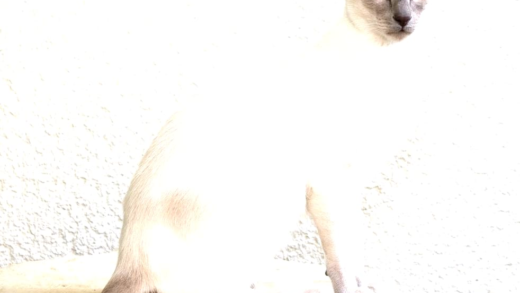This article explores the differences between roosters and chickens, the phenomenon of sex reversal, and its implications for egg production. It also compares sex reversal in chickens to other species, highlighting adaptability and environmental influences.
Difference Between Rooster and Chicken
Rooster and chicken are terms that often confuse many. A rooster is a male chicken, while chicken can refer to both males and females. The most notable difference between rooster and chicken lies in their reproductive roles and physical characteristics. Roosters have bright, colorful plumage, larger combs, and wattles compared to hens. Their crowing is a well-known trait, marking territory and attracting females.
Understanding the basic differences between these two types of poultry is essential. Roosters typically exhibit dominant behavior, often leading the flock and protecting hens. In contrast, hens focus on laying eggs and nurturing their chicks. This distinction is crucial for poultry keepers, as it influences flock dynamics and egg production.
Can a Chicken Become a Rooster?
Can a chicken become a rooster? This question sparks curiosity. While chickens are born with a predetermined sex, there are rare instances where a hen exhibits male characteristics. This phenomenon raises questions about gender transformation in chickens.
Gender transformation is not a common occurrence. However, some hens can develop rooster-like traits due to hormonal changes or environmental factors. Understanding these changes is essential for poultry enthusiasts and farmers who want to manage their flocks effectively.
Spontaneous Sex Reversal in Chickens
Spontaneous sex reversal in chickens is a fascinating topic. This phenomenon occurs when a chicken, typically a hen, develops male characteristics. Researchers believe this can happen due to various factors, including genetic mutations or hormonal imbalances.
Studying the scientific aspect of sex reversal in chickens helps clarify how this process occurs. It’s essential to observe the signs and understand the biological mechanisms involved, which can offer insights into poultry genetics and breeding practices.
Signs of Sex Reversal in Chickens
How can you tell if a chicken is changing its sex? Several signs indicate this unusual transformation. Look for physical changes such as the development of a larger comb, wattles, and more vibrant plumage. Behavioral changes may also occur, with the hen displaying more dominant or aggressive behavior typical of roosters.
Identifying the indicators of sex reversal in chickens is crucial for poultry keepers. Recognizing these signs early allows for better management and understanding of flock dynamics, ensuring a healthy environment for all birds involved.
Miss Lucille to Mr. Lucille
Meet Miss Lucille, a hen who surprised everyone by becoming Mr. Lucille. This incredible transformation showcases the phenomenon of sex reversal in chickens. Initially, Miss Lucille lived a typical life as a hen, laying eggs and socializing with her flock. However, over time, noticeable changes began to emerge.
First, she developed a larger comb and wattles, akin to those of a rooster. Her behavior also shifted; she became more assertive, often asserting dominance over other hens. This fascinating case highlights that sex reversal can occur, albeit rarely, in chickens due to hormonal changes or environmental influences.
Such real-life examples are critical for understanding the complexities of chicken biology. They shed light on the adaptability of these birds and challenge traditional notions of gender within poultry.
Factors Leading to Chicken Sex Reversal
Several factors contribute to the phenomenon of chicken sex reversal. Understanding these can aid poultry keepers in managing their flocks effectively. Here are the main contributors:
- Hormonal Imbalances: Fluctuations in hormone levels can trigger changes in sexual characteristics. Stress or environmental changes can lead to this imbalance.
- Genetic Mutations: Some chickens may carry genetic traits that predispose them to sex reversal. These mutations can alter how chickens express their sex characteristics.
- Age: Younger hens are more susceptible to hormonal changes, which can lead to the development of rooster-like traits.
- Environmental Factors: Conditions such as overcrowding or inadequate nutrition can impact hormonal levels, contributing to sex reversal.
Recognizing these factors is essential for poultry enthusiasts and farmers. By understanding the causes, they can take proactive steps to maintain a healthy flock.
Implications for Egg Production
When a chicken undergoes sex reversal and takes on rooster characteristics, the implications for egg production are significant. Typically, roosters do not lay eggs, so this transformation raises concerns among poultry keepers. Here’s what happens:
- No Egg Production: Once a hen transitions to a rooster, egg-laying ceases entirely. This can impact the overall egg supply for farmers.
- Behavioral Changes: The newly transformed rooster may exhibit territorial behaviors, affecting the dynamics within the flock.
- Breeding Challenges: If the flock lacks hens, the breeding process could be hindered, complicating future generations.
Understanding these implications is crucial for managing expectations in egg production and flock dynamics. Poultry keepers should be aware of the potential for sex reversal and its effects on their operations.
Sex Reversal in Other Animals
Sex reversal is not exclusive to chickens; it also occurs in various other species. Understanding how this phenomenon manifests across different animals broadens our comprehension of gender dynamics in the animal kingdom. For instance, in certain fish species like clownfish, the dominant female can change into a male if the male is removed. This adaptability ensures the continuity of breeding within the group.
Another example can be found in reptiles, such as some species of turtles, where environmental factors like temperature can influence the sex of the offspring. In these cases, a warmer climate may produce more females, while cooler temperatures yield more males. Such environmental influences highlight the complex interplay between genetics and surroundings in determining sex.
In mammals, sex reversal is rarer, but it has been documented in some cases, particularly among certain primates. These instances often involve hormonal imbalances or genetic anomalies that lead to the development of male characteristics in females or vice versa. The fascinating aspect of these transformations in various species is their adaptability and survival mechanisms. Understanding these processes helps in appreciating the evolutionary strategies that different animals employ.
Conclusion
Roosters and chickens exhibit distinct roles and characteristics, with roosters being the male counterparts of the more commonly referred chickens. While chickens typically remain in their designated gender roles, spontaneous sex reversal can occur, leading to fascinating transformations such as Miss Lucille’s case. Factors like hormonal imbalances and environmental influences play significant roles in such changes, affecting behavior and egg production. Additionally, sex reversal is a broader phenomenon seen in various species, including fish and reptiles, underscoring the adaptability of life in response to environmental and genetic factors. Understanding these dynamics not only enriches our knowledge of poultry management but also highlights the complexities of gender in the animal kingdom.



Comments are closed.